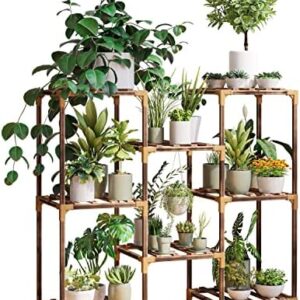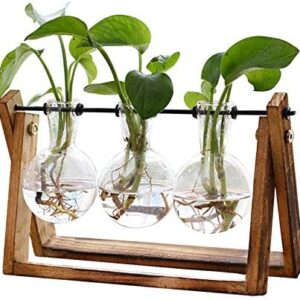These days, it seems like everyone is hopping on the indoor gardening trend. And why not? Having your own little green oasis inside your home is not only visually appealing but also has numerous health benefits. If you’re new to indoor gardening or are looking to up your game, fear not! We’ve got all the essential tips and tricks to help you master the art of indoor gardening.
First things first, let’s talk about light. Just like outdoor plants, indoor plants need light to thrive. However, not all plants require the same amount of light. It’s important to understand the light requirements of your plants and place them accordingly. South-facing windows usually provide the most sunlight, while north-facing windows offer the least. If you have plants that require a lot of light but don’t have access to direct sunlight, consider investing in grow lights to supplement.
Next up, let’s discuss watering. Overwatering is one of the most common mistakes made by indoor gardeners. To avoid this, it’s important to check the moisture level of your plants’ soil before watering. Stick your finger about an inch into the soil – if it feels dry, it’s time to water. Be sure to use a watering can with a fine spout to avoid flooding your plants. Additionally, most plants prefer room temperature water, so avoid using cold water straight from the tap.
In addition to light and water, plants also need nutrients to thrive. Indoor plants can quickly deplete the nutrients in their soil, so it’s important to feed them regularly. You can use a liquid fertilizer that’s specifically formulated for indoor plants or opt for slow-release fertilizer pellets. Be sure to follow the instructions on the package to avoid over-fertilizing, which can harm your plants.
Another essential aspect of indoor gardening is proper ventilation. Stagnant air can lead to pests and diseases, so it’s important to keep the air circulating in your indoor garden. You can achieve this by opening windows periodically, using a fan, or placing your plants near an air vent. If you notice any signs of pests or diseases on your plants, it’s crucial to address them promptly to prevent further damage.
When it comes to containers for your indoor plants, the options are endless. From traditional clay pots to modern self-watering containers, the choice is yours. Just make sure that whatever container you choose has drainage holes to prevent water from pooling at the bottom, which can lead to root rot. If you prefer a more aesthetic look, consider investing in decorative pots or planters to enhance the visual appeal of your indoor garden.
If you’re short on space but still want to indulge in indoor gardening, there are plenty of creative solutions available. Vertical gardening, for example, allows you to grow plants upwards, utilizing wall space rather than floor space. Hanging planters are another great option for those with limited space, as they can be suspended from the ceiling or mounted on walls. You can also consider investing in a plant stand or a plant shelf to maximize your indoor gardening potential.
One of the best parts of indoor gardening is the endless variety of plants you can grow. From lush tropical plants like pothos and philodendrons to colorful flowering plants like orchids and African violets, the possibilities are truly endless. It’s important to choose plants that are well-suited to the conditions in your home, such as light levels and humidity levels. Don’t be afraid to experiment and try out different plant varieties to see what thrives best in your indoor environment.
In conclusion, indoor gardening is a rewarding and fulfilling hobby that can bring a touch of nature into your home. By following these essential tips and tricks, you’ll be well on your way to mastering the art of indoor gardening. Remember to pay attention to light, water, nutrients, ventilation, and container choices to ensure the health and vitality of your indoor plants. With a little love and care, your indoor garden will flourish and bring joy to your space for years to come. Happy gardening!






